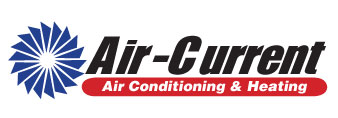
A furnace is almost always a background player for your home, ensuring you're warm across the cold winter months. It regularly doesn’t get noticed until a malfunction appears.
One source might be that your furnace has a cracked heat exchanger. It’s a potentially dangerous issue, so it’s critical to learn the signs of a cracked heat exchanger and what to do if you are worried that may be the problem.
What Is a Heat Exchanger in a Furnace?
A heat exchanger helps move heat from the combustion chamber inside your furnace to the air that circulates inside the air ducts. It typically handles this with coils or tubes that warm the air while functioning as a barrier to keep gas formed in the combustion chamber, called flue gasses, from leaking out into your home.
Is a Cracked Heat Exchanger Dangerous?
Given its key role, it’s no surprise that a cracked heat exchanger can pose a risk. A damaged heat exchanger can permit dangerous gasses – such as carbon monoxide, which can be lethal – to circulate across your home.
For obvious reasons, do NOT run your heating if you believe there's a crack in the heat exchanger, as letting it run could make the whole family sick. Reach out to an HVAC professional right away if you believe your furnace has a cracked heat exchanger that needs repair.
Four Signs of a Cracked Heat Exchanger:
- Furnace turns off: Cracks in the heat exchanger could cause your furnace to shut off.
- Unusual Smells: If the air leaving your furnace has an intense chemical smell, it could be a sign gas is slipping through cracks in your heat exchanger. These gasses, which will often smell like formaldehyde, are a significant warning sign.
- Carbon monoxide alarm is triggered or you recognize health problems: If a cracked heat exchanger is emitting carbon monoxide inside your home, your carbon monoxide alarm may go off or household members might struggle with signs of carbon monoxide poisoning. Symptoms include headaches, dizziness, weakness, nausea, vomiting or feeling tired. If the alarm goes off or you feel unusually tired, leave the home immediately and then call for help.
- Soot: If you see black sooty collecting around the exterior of your furnace, it’s another sign something could be seriously wrong.
What to Do if Your Furnace Heat Exchanger is Cracked
If you suspect your furnace has a cracked heat exchanger, contact a pro well versed in furnace installation Houston right away so they can examine your system and, if required, handle a furnace heat exchanger replacement. Costs should vary depending on the situation, but estimates often hover around $1,000 to $3,000.
Fortunately, the good news is that heat exchangers are regularly protected by the warranty. You should review the warranty paperwork on your furnace, as while the warranty won't always cover the entire cost of repairs, it can significantly reduce your bill.
How to Avoid a Cracked Heat Exchanger in Your Home
One of the best ways to avoid problems in your furnace overall is via consistent furnace maintenance. Furnaces offer the most benefits when they run efficiently. Hiring a skilled professional to check your furnace for broken-down parts, dirty filters and other likely problems can help you avoid getting a big bill later on.
It’s also beneficial to inspect your furnace filters every few months – it’s encouraged some filters be swapped out every 90 days or sooner if they are dirty or grimy. While the filters aren't a part of the heat exchanger itself, the strain of dragging air through a clogged filter makes the entire furnace work more vigorously to accomplish its job. And the harder your furnace has to work, the more strain parts like the heat exchanger will sustain.
